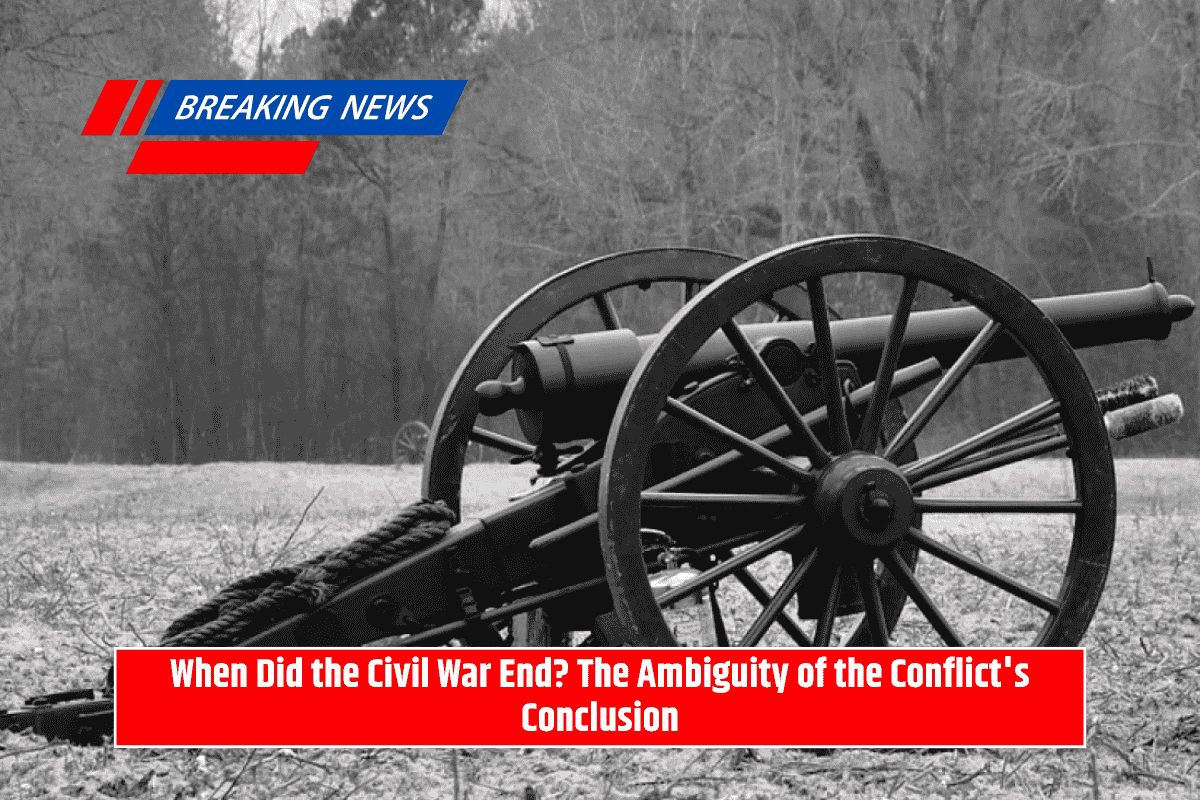The question of when the American Civil War truly ended is not as straightforward as we often think. While we commonly point to April 9, 1865, when Confederate General Robert E.
Lee surrendered to Union General Ulysses S. Grant at Appomattox Court House, the reality is more complex. Some might argue that the war did not end until June 19, 1865, when a federal commander in Galveston, Texas, proclaimed the end of slavery, a day now celebrated as Juneteenth.
Others point to August 1866 when President Andrew Johnson declared “the insurrection is at an end.”
The question of the exact end date highlights the confusion and uncertainty that many people living through the war faced. Even in the aftermath of Lee’s surrender, there were still pockets of Confederate resistance, and it took time for the full ramifications of the war and its conclusion to become apparent.
The War’s Traditional End: Appomattox and Beyond
Traditionally, the Civil War is said to have started on April 12, 1861, when Confederate troops fired on Fort Sumter in Charleston Harbor, South Carolina. The surrender at Appomattox on April 9, 1865, marks the end of the war in the popular narrative.
However, this clean beginning and ending do not fully encapsulate the complexity of the conflict’s conclusion. Lee’s surrender was a key moment, but it wasn’t the definitive end for all Confederate forces.
It’s important to note that in the aftermath of Appomattox, the Union victory was not immediately clear to everyone in the South. In fact, newspapers like the Galveston News reported Lee’s surrender as a positive development for the Confederacy, encouraging Texans to continue the fight.
Even after Lee’s surrender, there were still Confederate holdouts in various parts of the South.
Juneteenth: A Significant Marker of the End
One of the most symbolic moments of the war’s conclusion came on June 19, 1865, in Galveston, Texas. It was here that Union Major General Gordon Granger issued General Order No. 3, proclaiming the end of slavery in Texas, which was one of the last Confederate states to receive the news.
This moment is now commemorated annually as Juneteenth, a significant milestone in the struggle for freedom and equality.
However, Juneteenth alone did not mean the full end of the war or its violent aftermath. The proclamation in Galveston was part of the broader process of Reconstruction and the gradual establishment of peace, but it was not the final step in the journey toward national reconciliation.
The Final Declaration: President Andrew Johnson’s Proclamation
In August 1866, President Andrew Johnson declared, “the insurrection is at an end,” marking a formal conclusion to the hostilities. But even this declaration did not resolve all the issues stemming from the war.
The South was still grappling with the aftermath of defeat, the abolition of slavery, and the process of rebuilding. The legacy of the war continued to shape American society for years, especially as questions around civil rights, the status of freed people, and regional tensions remained unresolved.
When Did Post-Civil War Peace Begin?
The most elusive question is when the post-Civil War peace actually began. Historian Michael Vorenberg, a leading scholar on the subject, notes that the peace that President Lincoln envisioned was never fully realized in his lifetime.
His assassination left the nation in a state of uncertainty, and the true peace after the war required much more than the formal end of hostilities.
Vorenberg’s work, especially his book Lincoln’s Peace, explores the multifaceted nature of the post-war peace process, noting that peace after such a devastating conflict cannot be marked by a single event.
It took time to integrate the Southern states back into the Union, ensure the rights of freed people, and establish a new national order.
The question of when the Civil War truly ended remains a complex and layered issue. While April 9, 1865, is often marked as the date of the Confederacy’s surrender, the true end of the war was a protracted process, with significant milestones like Juneteenth and President Johnson’s 1866 proclamation marking different points in this journey.
Similarly, the post-war peace did not come all at once but evolved over time, as the nation continued to struggle with the war’s aftermath and the rebuilding of the South. For historians and for the people living through it, the question of when peace truly began remains an elusive one.
